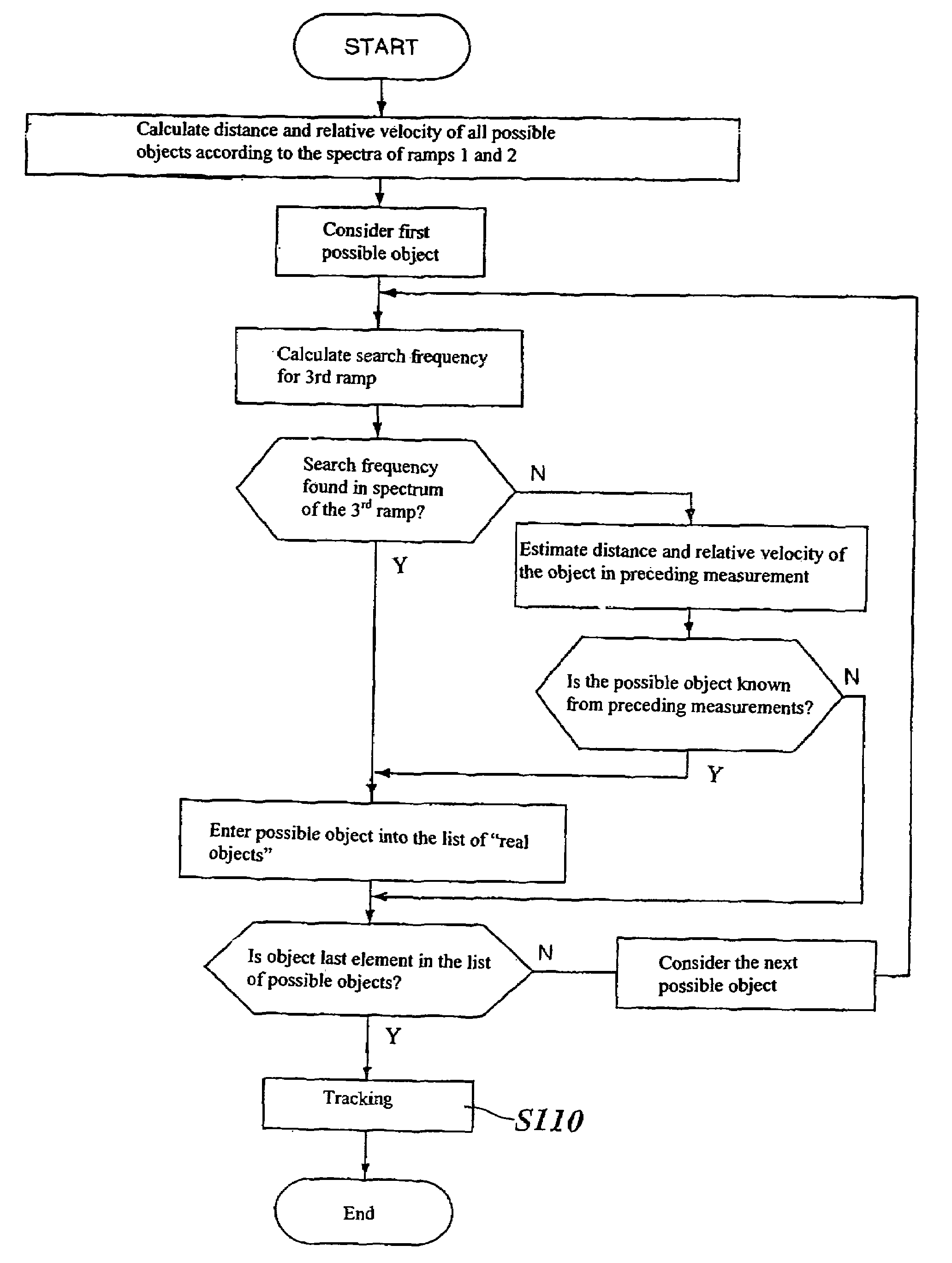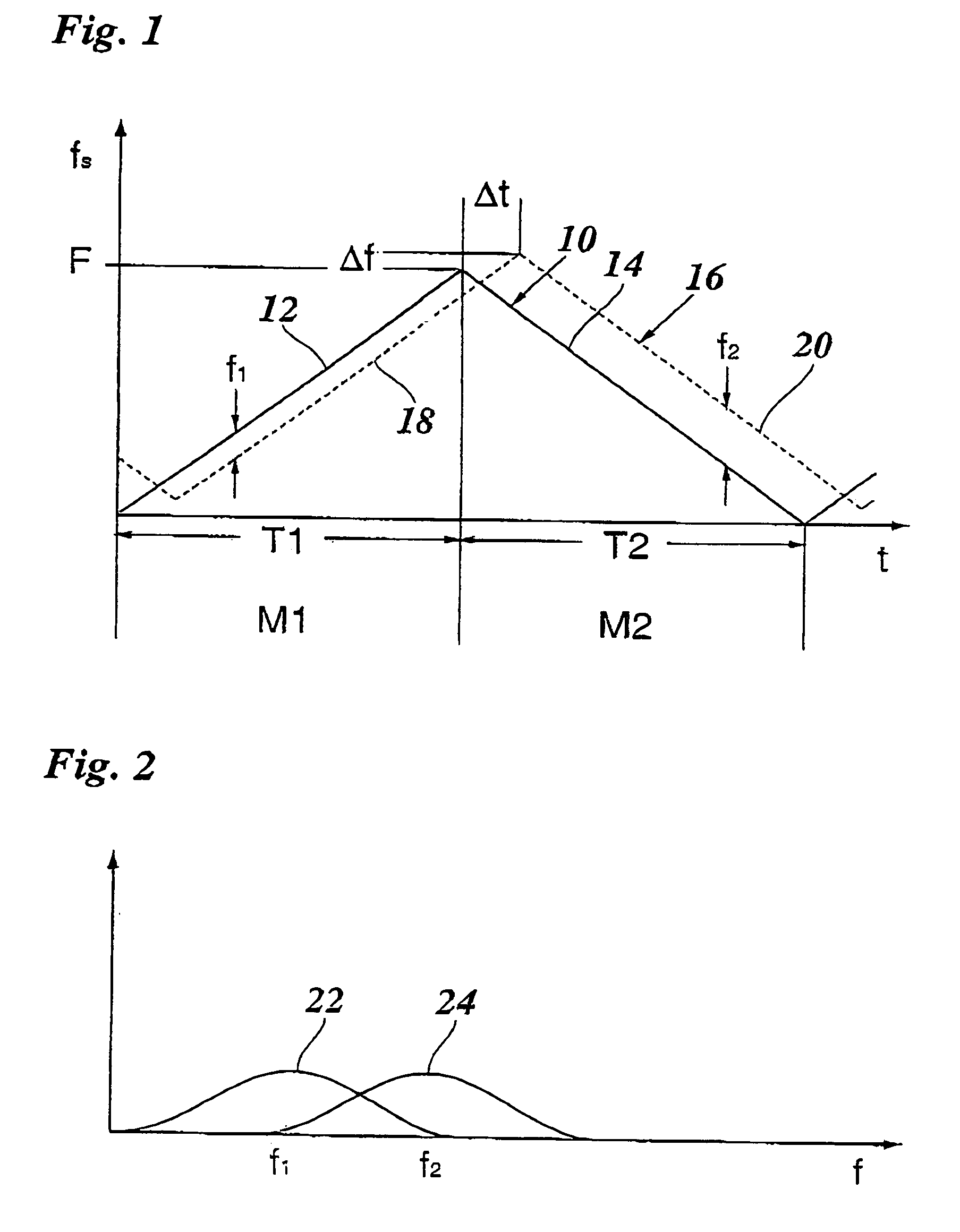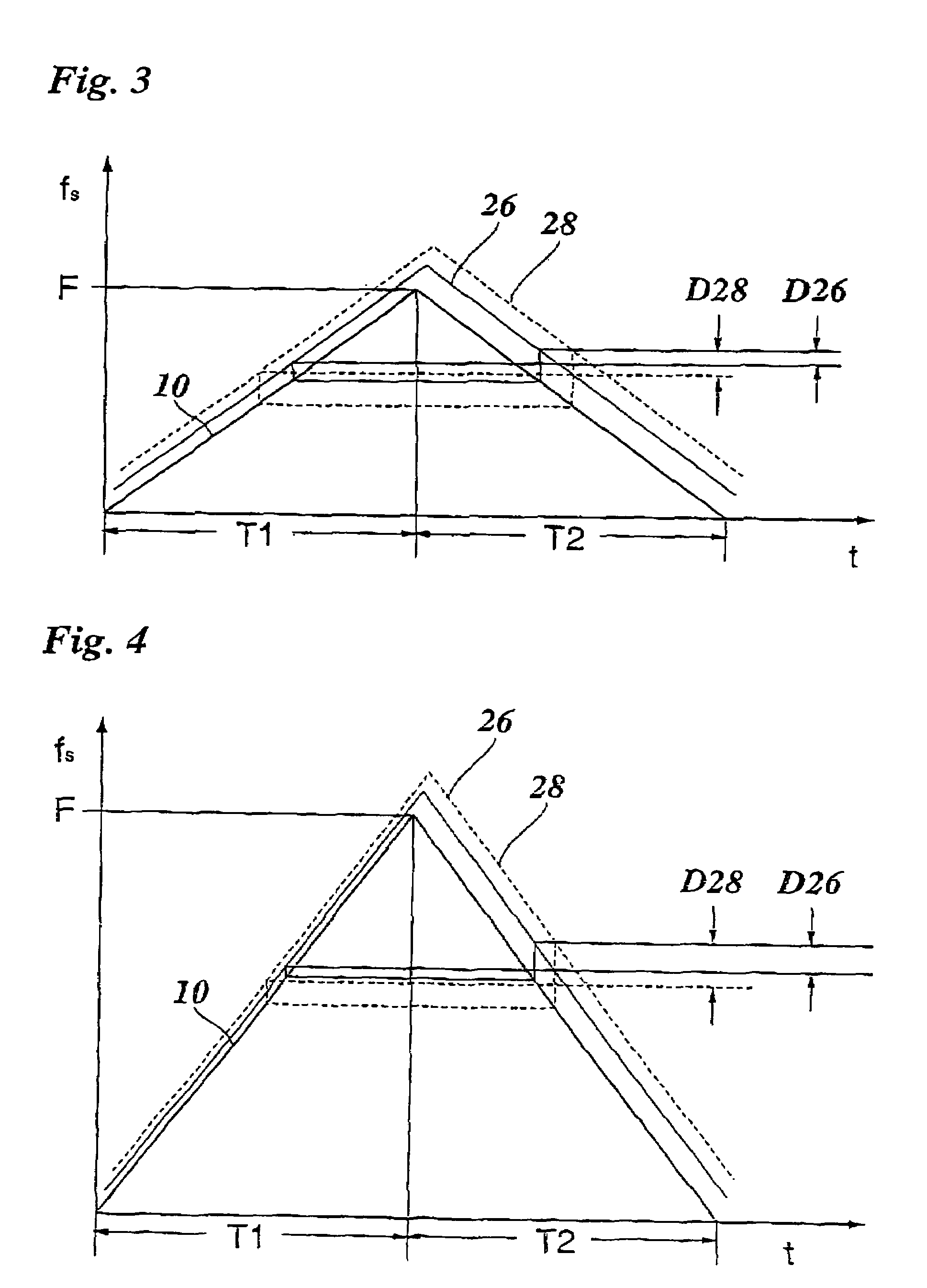Method for measuring distances and speeds of several objects by means of an FMCW radar
a technology of fmcw radar and distance and speed, applied in the direction of measuring devices, instruments, using reradiation, etc., can solve the problems of ambiguity and the possibility of separating various objects from each other
- Summary
- Abstract
- Description
- Claims
- Application Information
AI Technical Summary
Benefits of technology
Problems solved by technology
Method used
Image
Examples
Embodiment Construction
[0055]According to FIG. 1, when working with an FMCW radar, radar waves are continually emitted with variable frequency fs. Curve 10 drawn in bold indicates the time dependency of frequency fs. This frequency is varied periodically according to a ramp function having a rising first ramp 12 and a falling second ramp 14. Ramps 12, 14 belong to two measurements M1 and M2, which are repeated cyclically. The ramps for both measurements have the same frequency deviation F and identical modulation durations T1 and T2, and consequently their slopes are equal and opposite.
[0056]Frequency curve 16 for the associated radar echo of a single object is shown with a broken line. This curve has the same ramps 18 and 20, but with a time shift Δt, which is given by the object distance, and with a frequency shift Δf determined by the Doppler shift.
[0057]In the radar sensor, the emitted wave is mixed with the received radar echo, so that a low-frequency beat signal (LF signal) is obtained having a freq...
PUM
 Login to View More
Login to View More Abstract
Description
Claims
Application Information
 Login to View More
Login to View More - R&D
- Intellectual Property
- Life Sciences
- Materials
- Tech Scout
- Unparalleled Data Quality
- Higher Quality Content
- 60% Fewer Hallucinations
Browse by: Latest US Patents, China's latest patents, Technical Efficacy Thesaurus, Application Domain, Technology Topic, Popular Technical Reports.
© 2025 PatSnap. All rights reserved.Legal|Privacy policy|Modern Slavery Act Transparency Statement|Sitemap|About US| Contact US: help@patsnap.com



